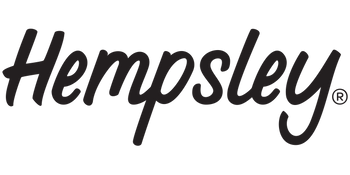-
00:18 What is the entourage effect?
-
00:54 Differences between THC and CBD
-
01:13 What happens when THC and CBD are used together?
-
01:54 What to look for when shopping
-
02:11 The 3 cannabinoid profile categories
-
02:42 Typical CBD:THC ratios
-
03:10 Getting started: choosing a ratio
-
04:02 Already experienced with THC? Try this
-
04:36 Tips and tricks
-
04:45 Where to learn more
In today’s episode of “How to NOT get high with cannabis,” we’re exploring cannabinoid ratios. In Video 1 we talked about hemp CBD, and in Video 3 we talked about finding your minimum effective dose of THC — but at the end of the day, if we’re really trying to use cannabis as medicine, then we want to use both THC and CBD together.
In our video about Hemp CBD products, we mentioned that ideally you want to be looking for “full spectrum” or “whole plant” extracts that have trace amounts of THC, as they’ve been found to be more effective than CBD isolates — and this is because of a concept in cannabis called the “entourage effect.”
The Entourage Effect
The “entourage effect” theorizes that all of the compounds in cannabis (cannabinoids, terpenes, flavonoids, and more) work best when used together, enhancing one another’s effects to maximize therapeutic benefits. When it comes to using cannabis as a medicine, choosing a CBD:THC ratio has a big impact on the level of intoxication or “high” you experience.
If you recall from our hemp CBD video, THC binds to endocannabinoid system receptors primarily found in our brain and central nervous system, which is why it can create intoxicating experiences — while CBD’s primary function is to slow the breakdown of our body’s own naturally produced endocannabinoids so that we can use more of them.
But when THC is consumed with CBD, CBD is actually able to bind to our receptors as well — and it changes their shape, weakening THC’s ability to bind to the receptor and ultimately impacting how “high” we feel.
When used together, CBD can reduce the negative side effects of THC such as anxiety, paranoia, elevated heart rate, memory loss, and sluggishness while THC can help to increase the therapeutic benefit of CBD. This is important information for patients who truly need the therapeutic properties that THC has to offer, but don’t want to feel “high.” And if you are someone who uses THC recreationally, keep this in mind if you do happen to get uncomfortably “high.”
So what’s this look like in practice?
Well, if you walk into a dispensary, you’ll probably see products labeled as Sativa, Indica, and Hybrid — but this doesn’t tell you anything about the CBD:THC ratio, so you’ll likely need to ask your budtender about which products offer the CBD:THC ratio that you’re interested in. This is known as a cannabinoid profile, and all cannabis products fall into three general categories:
-
CBD-dominant
-
Balanced
-
THC-dominant
Generally speaking, if you don’t want to get “high” then you should look for a CBD-dominant or balanced product, but it’s important to note that cannabis affects everyone differently; depending on your condition and dosing, a THC-dominant product may be an effective medicine without producing a “high.” See Video 03 on Finding your Minimum Effective Dose of THC for more information.
You can typically find CBD:THC ratios such as 1:1, 2:1, 1:2, 3:1 or even 10:1 or 20:1. When shopping, know that CBD-dominant products are relatively new; most cannabis strains have been bred to be THC-dominant — but as more research is done on the benefits of more balanced and CBD-dominant strains, this is changing. Ask your budtender to direct you to the CBD-dominant options in your dispensary.
Now, if you have no experience with THC and are particularly concerned about getting “high,” then starting with the highest CBD:THC ratio available is the way to go. Many medical patients have reported that a 20:1 CBD:THC ratio has been helpful for their symptoms without making them feel intoxicated at all.
Even with this ratio, you’ll still want to start low and go slow, paying attention to how many milligrams (MG) of THC is in the dose you are consuming. For tips on getting started with dosing THC, check out Video 03 on Finding your Minimum Effective Dose of THC here.
If this ratio doesn’t work for you, slowly start increasing your ratio of THC, again starting low and going slow. This may feel tedious and perhaps even expensive as you try new products, but know that as long as you’re careful with your math, you can always combine products to create your own perfect CBD:THC ratio.
On the flip side, if you are already experienced with THC and are looking for a product ratio that would allow you to get the relief you’re seeking while still remaining alert and productive during the day, you may want to start with a bit more THC in your ratio, perhaps 2:1 or even 1:1 parts CBD:THC.
Know that your perfect ratio may change based on the symptoms you’re dealing with. For example, I personally find that a 1:1 ratio of CBD:THC does wonders for my migraines, but if I’m struggling with back pain, a 2:1 ratio allows me to keep a clearer head.
Either way, always be sure to track your dose and the effects you feel — this is important for recreating or avoiding experiences in the future!
To learn more about the science behind using CBD and THC together, click here.
For more tips on how to not get high with cannabis, be sure to check out more from this video series here. And if you have any questions, please don’t hesitate to reach out to us at hello@hempsley.com
This article was written by Kristen Williams in collaboration with Feel State Dispensaries and published on July 2, 2020. Copyright ©2020 Hempsley and Feel State Inc., All Rights Reserved





















